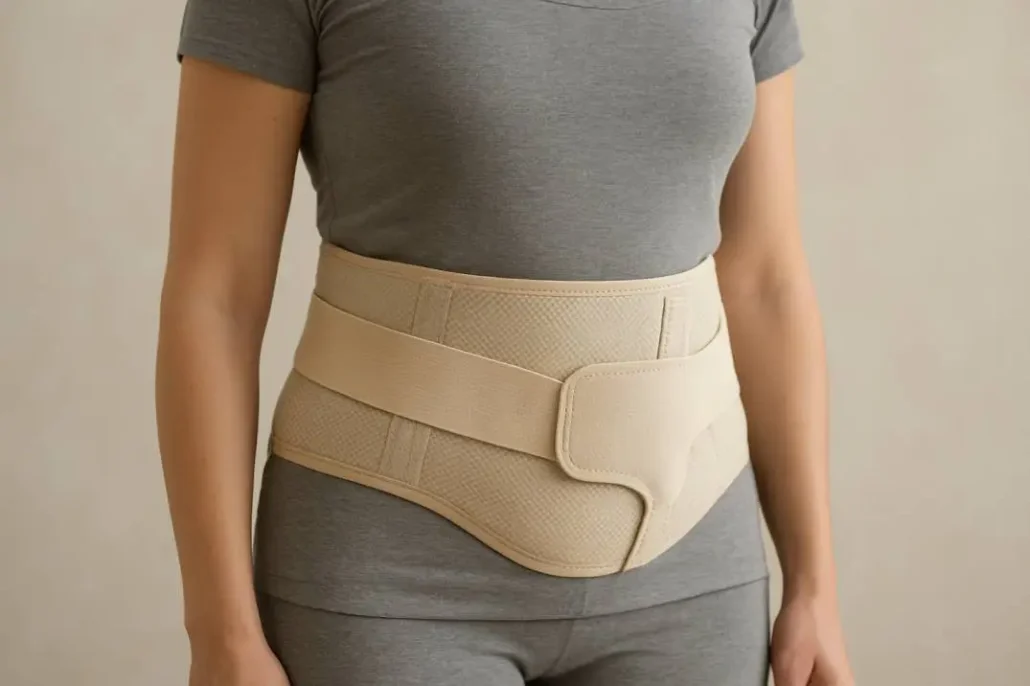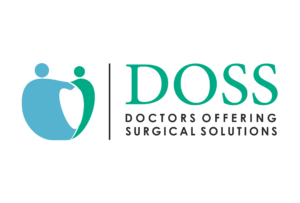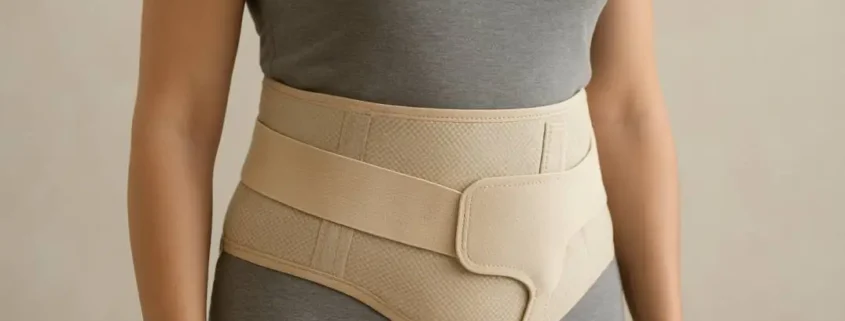Finding Comfort: Your Guide to Hernia Support Garments
BlogLiving with a hernia can be uncomfortable and sometimes restrictive. Whether you’re waiting for surgery, recovering post-op, or managing a hernia that doesn’t require immediate surgical intervention, finding ways to manage discomfort and maintain your daily activities is crucial.
This is where hernia support garments come into play, offering gentle compression and stability to help you move with more confidence.
This guide will walk you through everything you need to know about using hernia support garments for daily wear.
We’ll explore the different types available, how to choose the right one for your specific needs, and answer common questions about their use.
Our goal is to provide clear, trustworthy information to help you make an informed decision and find the comfort you deserve.

What Are Hernia Support Garments?
Hernia support garments are specialised undergarments or belts designed to provide external support to a hernia. They work by applying gentle, consistent pressure over the herniated area.
This pressure helps to keep the protruding tissue or organ in place, which can alleviate pain, reduce the feeling of bulging, and prevent the hernia from worsening during physical activity.
These garments are not a cure for a hernia, which often requires medical or surgical treatment. Instead, they are a management tool used to improve quality of life.
Think of them as a supportive aid that allows you to continue with your day-to-day life with less discomfort and a greater sense of security.
How Do Hernia Supports Work?
The primary mechanism of a hernia support is compression. By gently pushing the bulge back, the garment provides several key benefits:
- Pain Relief: The pressure can significantly reduce the aching or sharp pains associated with a hernia.
- Symptom Management: It helps control the noticeable bulge, making it less prominent under clothing.
- Support During Activity: It provides stability during activities like walking, lifting, or exercising, reducing the risk of strain.
- Post-Surgical Healing: After an operation, a support garment can help reduce swelling and protect the incision site as it heals.
Types of Hernia Support Garments
Hernia supports come in various shapes and styles, each designed for different types of hernias and levels of support. Choosing the right type is essential for both comfort and effectiveness.
Hernia Belts (Trusses)
A hernia belt, often called a truss, is one of the most common types of support. It typically consists of an elastic band that wraps around the waist or pelvis, with a specialised pad that applies direct pressure to the hernia.
- Best for: Inguinal (groin) hernias.
- Features: They are often adjustable and can have pads for single or double hernias. They are designed to be worn discreetly under clothing.
- Use Case: Ideal for daily wear to manage symptoms and provide support during light activities.
Hernia Support Briefs & Boxers
These look and feel much like regular underwear but have built-in support panels. They offer a more integrated and often more comfortable solution than a separate belt.
- Best for: Inguinal hernias, post-surgical support, and general abdominal weakness.
- Features: They provide anatomically correct compression and are made from breathable, skin-friendly fabrics.
- Use Case: Excellent for all-day wear, providing seamless support that moves with your body. Many people find them more comfortable for sleeping or extended wear.
Abdominal Binders (Belly Binders)
An abdominal binder is a wide, elasticated band that wraps around the torso. It provides broad compression across the entire abdominal area.
- Best for: Umbilical (navel), incisional (at a surgical scar), or ventral hernias. They are also widely used for post-operative recovery.
- Features: Highly adjustable with Velcro or hook-and-loop closures. Their width can vary depending on the area needing support.
- Use Case: Provides firm support after abdominal surgery to reduce swelling and help muscles heal. It can also manage the symptoms of an umbilical hernia.
Comparing Hernia Support Types
Garment Type | Primary Use | Level of Support | Discretion |
Hernia Belt (Truss) | Inguinal Hernia | Moderate to Firm | Good |
Support Briefs/Boxers | Inguinal, Post-Op | Light to Moderate | Excellent |
Abdominal Binder | Umbilical, Incisional | Firm to Extra Firm | Fair |
How to Choose the Right Hernia Support for You?
Selecting the best garment depends on several factors. Always consult your doctor or a physiotherapist before purchasing a hernia support to ensure it is appropriate for your condition.
1. Identify Your Hernia Type
The location of your hernia is the most important factor. An inguinal hernia requires a different type of support than an umbilical one. Your doctor will diagnose the type of hernia you have.
2. Consider Your Lifestyle and Activity Level
Think about when you will wear the support. If you need all-day comfort for office work and light walking, a support brief might be ideal. If you require extra stability for more strenuous activities or have a physically demanding job, a firmer hernia belt or binder may be more suitable.
3. Get the Right Size
Proper sizing is critical for both comfort and effectiveness. A garment that is too tight can restrict circulation and cause more pain, while one that is too loose will not provide adequate support.
- How to Measure: Most manufacturers provide a sizing guide. You will typically need to measure your waist or hip circumference. For hernia belts, you measure around the hips, not the waist.
- Check the Fit: The support should be snug but not painfully tight. You should be able to breathe comfortably and move without significant restriction. The pressure pad on a truss should sit directly over the hernia.
4. Check the Material
Since the garment will be in direct contact with your skin, choose one made from breathable, hypoallergenic materials to prevent irritation and sweating. Cotton blends and modern microfibres are excellent choices.
Daily Wear and Care Tips
To get the most out of your hernia support garment, it’s important to wear and care for it correctly.
- Putting It On: It is often recommended to lie down when putting on your hernia support, especially a truss. This allows gravity to help the hernia retract, so you can position the pad correctly before securing the belt.
- Wearing Schedule: Your doctor will advise you on how long to wear the garment each day. Many people wear it during their waking hours and remove it at night, but post-surgical patients may need to wear it 24/7 for a period.
- Skin Care: Check your skin daily for any signs of redness, rash, or pressure sores. Keep your skin clean and dry. Avoid applying lotions or creams under the support pad.
- Cleaning: Follow the manufacturer’s washing instructions. Most hernia supports should be hand-washed in cool water with mild soap and then air-dried. Machine washing can damage the elastic fibres and reduce the garment’s effectiveness.
Frequently Asked Questions (FAQ)
Q: Can I wear a hernia support garment all day?
A: Yes, most hernia supports are designed for all-day wear. However, it is generally recommended to remove them at night unless your doctor has advised otherwise, such as during post-operative recovery.
Q: Will a hernia belt cure my hernia?
A: No, a hernia support garment does not cure a hernia. It is a tool for managing symptoms like pain and bulging. A definitive cure for most hernias requires surgical repair.
Q: Can I exercise while wearing a hernia support?
A: Yes, wearing a support garment can provide the stability needed to perform light to moderate exercise safely. It is particularly helpful for activities like walking, yoga, or light weightlifting. Always consult your doctor about which exercises are safe for you.
Q: How do I know if my hernia belt is too tight?
A: A hernia belt is too tight if it causes pain, numbness, tingling, or leaves deep red marks on your skin. It should feel snug and supportive, but never constricting. You should be able to slip a finger between the belt and your skin.
Q: Should I wear my hernia support over or under my underwear?
A: Hernia belts and binders are typically worn over your underwear to keep them cleaner and reduce skin irritation. Hernia support briefs and boxers are worn in place of your regular underwear.
Key Takeaways
- Hernia support garments manage symptoms by providing gentle compression to the herniated area.
- They do not cure hernias but can significantly improve comfort and quality of life.
- The main types are hernia belts (trusses), support briefs, and abdominal binders.
- Choosing the right type depends on your hernia location, activity level, and proper sizing.
- Always consult a hernia specialist before using a hernia support to ensure it is right for your condition.
- Proper wear and care, including hygiene and following washing instructions, are essential for effectiveness and longevity.


 +919011100010
+919011100010 


